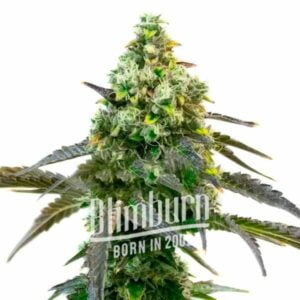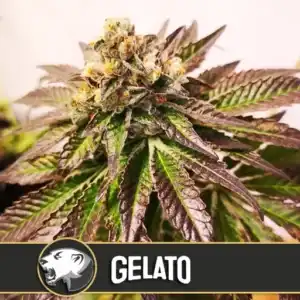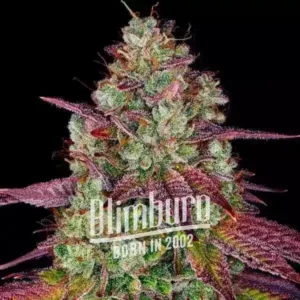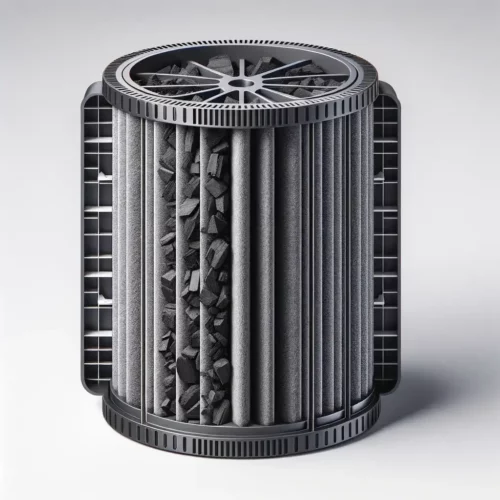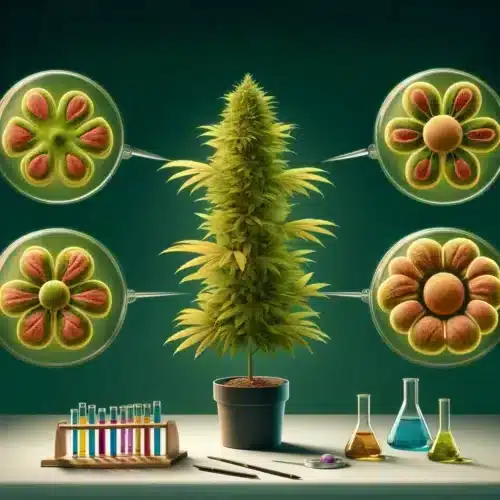Introduction to Weed Seedlings
Weed seedlings, often seen as unwanted guests in gardens and agricultural lands, play a significant role in the ecosystem. Despite their reputation, understanding these seedlings is crucial for effective garden management. This article delves into the biology, identification, impact, and control of weed seedlings, providing gardeners with the knowledge to maintain a healthy, weed-free environment.
Understanding Cannabis Seedlings
The Biology of Weed Seedlings
The biology of weed seedlings is a fascinating and complex subject, pivotal for gardeners and farmers aiming to manage these unwelcome plants effectively. Understanding the biological mechanisms behind cannabis seedling growth can provide insights into how to prevent their spread and minimize their impact on cultivated plants and garden aesthetics.
Seed Dormancy and Germination
Weed seeds exhibit a natural state known as dormancy, where they remain inactive until conditions are favorable for germination. This dormant state can last for several years, making weed management a long-term commitment. Factors that break seed dormancy include temperature fluctuations, light exposure, and moisture availability, which vary among weed species. For example, some seeds require exposure to cold temperatures during winter to germinate in spring, a process known as stratification.
Rapid Growth and Adaptation
Once the dormancy is broken, cannabis seedlings grow rapidly, a survival strategy that allows them to compete effectively with surrounding vegetation. This rapid growth is supported by the seed’s stored energy reserves until the seedling can photosynthesize. Weed seedlings are highly adaptable, often thriving in conditions that are less than ideal for cultivated plants. This adaptability is partly due to their genetic diversity and the ability to mutate quickly, allowing them to resist herbicides and survive in various environmental conditions.
Root and Shoot Development
The first stage of weed seedling growth involves the development of the root (radicle) and shoot (plumule). The radicle anchors the plant into the soil and begins absorbing water and nutrients, while the shoot grows upwards towards the light. This dual development ensures that the seedling can start photosynthesizing as soon as possible, essential for its growth and development.
Photosynthesis and Resource Allocation
Cannabis seedlings are efficient at photosynthesis, quickly converting sunlight into energy. This efficiency is crucial for their survival and competitiveness. They allocate resources strategically, prioritizing root growth to access water and nutrients and shoot growth to maximize photosynthesis. This strategic resource allocation allows weed seedlings to outcompete neighboring plants, even in nutrient-poor soils or drought conditions.
Survival Strategies
Weed seedlings employ various survival strategies, including rapid lifecycle completion and the production of numerous seeds to ensure their species’ survival. Many weeds are capable of producing thousands of seeds from a single plant, which can disperse over large areas through wind, water, or animal movement. Additionally, some weed seeds are equipped with physical features that allow them to attach to animal fur or clothing, further aiding in their dispersion.
Environmental Impact
While often viewed negatively, cannabis seedlings play a crucial role in their ecosystems. They can act as pioneer species in disturbed soils, preventing erosion and providing habitat for wildlife. Moreover, they contribute to biodiversity and can serve as indicators of soil health or environmental conditions. Understanding the ecological role of weed seedlings can help in developing more balanced and sustainable weed management practices.
In conclusion, the biology of weed seedlings is a key area of study for anyone involved in agriculture or gardening. By understanding the mechanisms behind their growth, germination, and survival strategies, we can develop more effective, targeted approaches to weed management that respect the balance of our ecosystems. Knowledge of cannabis seedling biology not only aids in their control but also highlights the complex interactions within our environments, emphasizing the importance of a holistic approach to plant management.
Weed seedlings can be broadly categorized into several types, each possessing unique characteristics that can affect their management and impact on gardens and agricultural settings. Familiarizing oneself with these common types is essential for effective identification and control. Here, we delve into some of the most prevalent cannabis seedling types, offering insights into their identification and understanding their growth habits.
Common Types of cannabis Seedlings
Broadleaf Weeds
Broadleaf weeds, known for their wide, flat leaves, are among the most common types encountered in gardens and fields. These weeds often have a more robust appearance compared to grassy weeds and can be easier to identify due to their distinctive leaf shapes and patterns.
- Dandelion (Taraxacum officinale): Easily recognizable by its rosette leaf pattern and yellow flower, dandelions are perennial broadleaf weeds. They thrive in a variety of conditions and can quickly take over lawns and gardens if not managed.
- Purslane (Portulaca oleracea): This succulent-like weed features fleshy leaves and stems with yellow flowers. Purslane spreads rapidly across the ground, forming dense mats that can smother cultivated plants.
- Lambsquarters (Chenopodium album): Characterized by its dusty, gray-green leaves, lambsquarters is a common annual weed that can grow in poor soil conditions. Its high seed production makes it a persistent problem.
Grassy Weeds
Grassy weeds mimic the appearance of lawn grasses, making them more challenging to identify and control. They have narrow leaves, grow in a similar pattern to grass, and are often found invading lawns.
- Crabgrass (Digitaria species): A notorious annual grassy weed, crabgrass thrives in hot, dry conditions. It spreads out from a central root, forming dense mats that can outcompete lawn grasses.
- Foxtail (Setaria species): This annual weed is named for its bushy, tail-like seed heads. Foxtails are aggressive competitors and can quickly invade lawns and gardens, especially in disturbed soils.
- Quackgrass (Elymus repens): A perennial grassy weed with creeping rhizomes that make it difficult to eradicate. Quackgrass can quickly dominate gardens and agricultural lands due to its extensive root system.
Sedge Weeds
Sedges are often mistaken for grassy weeds but can be distinguished by their triangular stems and preference for moist, wet areas. They are tough to control due to their resilient nature and ability to grow in various conditions.
- Yellow Nutsedge (Cyperus esculentus): This perennial weed is notorious for its yellow-green leaves and tuberous root system. Yellow nutsedge prefers wet, poorly drained soils and can be challenging to control once established.
- Purple Nutsedge (Cyperus rotundus): Similar to its yellow counterpart but with darker leaves and tubers, purple nutsedge is equally problematic in gardens and agricultural fields, thriving in warm, moist conditions.
Invasive Species
Invasive weed species pose significant challenges due to their aggressive growth, high reproductive rates, and ability to displace native plants. These species often require specific strategies for control and management.
- Japanese Knotweed (Fallopia japonica): A highly invasive perennial with bamboo-like stems, Japanese knotweed can cause structural damage to buildings and is difficult to eradicate.
- Kudzu (Pueraria montana var. lobata): Known as “the vine that ate the South” in the United States, kudzu is a fast-growing vine that smothers other plants and structures with its dense growth.
Understanding the common types of weed seedlings is crucial for implementing effective weed management strategies. By recognizing these weeds early in their growth stages, gardeners and farmers can take appropriate action to prevent their spread, protecting cultivated plants and preserving the health and beauty of their gardens and fields.
Germination Process of Weed Seeds
Factors Influencing cannabis Seed Germination
Several factors influence the germination of weed seeds, including soil conditions, seasonal changes, and human activities. Knowing these factors can help gardeners preemptively address weed issues.
The Germination Timeline
The timeline from seed to seedling varies among weed species. This part explains the stages of germination and growth, helping gardeners recognize and act swiftly against cannabis seedlings.
Identifying Weed Seedlings in Your Garden
Visual Identification Tips
Visual cues are vital for distinguishing weed seedlings from desirable plants. This section provides tips and tricks for identifying common weed seedlings.
Common Mistakes in Identifying Weed Seedlings
Mistaking young vegetable plants or flowers for weeds is a common error. Learn how to avoid these mistakes to ensure the health and productivity of your garden.
The Impact of cannabis Seedlings on Gardens
Competition with Cultivated Plants
cannabis seedlings compete with cultivated plants for resources, light, and space. Understanding this competition can help gardeners implement effective weed management strategies.
Effects on Garden Aesthetics
Weeds can detract from the beauty of a garden. This section discusses the aesthetic impact of cannabis seedlings and how to maintain a visually appealing garden.

Preventive Measures Against Weed Seedlings
Pre-Emergent Herbicides
Pre-emergent herbicides can prevent weed seeds from germinating. Learn about the safe and effective use of these chemicals in your garden.
Cultural Practices
Cultural practices, such as crop rotation and proper watering techniques, play a significant role in weed management. Discover how these practices can reduce the prevalence of weed seedlings.
Natural and Chemical Control of Weed Seedlings
Natural Remedies
Explore natural remedies for controlling cannabis seedlings, including hand weeding, boiling water, and vinegar solutions, offering an eco-friendly approach to weed management.
Chemical Control Methods
While chemical herbicides are effective, they require careful handling and application. This section covers the responsible use of chemical controls in managing weed seedlings.
Innovative Gardening Techniques to Suppress Weed Seedlings
Mulching Techniques
Mulching is an effective way to suppress weed seedlings while retaining soil moisture. Learn about different mulching materials and their benefits.
Ground Cover Plants
Ground cover plants can outcompete cannabis seedlings for resources. Discover how to select and use ground covers for weed suppression.
The Role of Soil Health in cannabis Seedling Management
Enhancing Soil to Discourage Weeds
Healthy soil is less conducive to weed growth. This section explores soil amendments and practices that promote soil health and discourage weed seedlings.
Soil Testing and Amendments
Soil testing can reveal nutrient deficiencies and pH imbalances that favor weeds. Learn how to amend your soil based on test results for optimal plant health and reduced weed growth.
Leveraging Technology in Weed Management
Smartphone Apps for Weed Identification
Technology offers new tools for weed management, including smartphone apps that assist in identifying cannabis seedlings. Discover how these apps can be a valuable resource for gardeners.
Advanced Gardening Gadgets
From soil moisture sensors to robotic weeders, technology is transforming garden management. Explore the latest gadgets and how they can help control cannabis seedlings.
Weed seedlings, often viewed solely as nuisances in gardens and agricultural lands, play significant roles in their ecosystems. These roles can be both beneficial and detrimental, depending on the context and the balance of the ecosystem in question. Understanding the ecological functions of cannabis seedlings can help in developing more nuanced and sustainable approaches to weed management, acknowledging their contributions alongside their challenges.
Contributions to Biodiversity
Weed seedlings contribute to biodiversity in several ways. They can provide food and habitat for a variety of wildlife, including insects, birds, and small mammals. The presence of diverse weed species can support pollinators by offering nectar and pollen sources when other plants are not in bloom. Additionally, cannabis seedlings can act as a genetic reservoir, offering genetic diversity that can be crucial for adapting to changing environmental conditions.
Soil Health and Stability
Weed seedlings can play a pivotal role in maintaining soil health and stability. Their roots help to bind the soil, reducing erosion caused by wind and water. This is particularly important in disturbed or degraded landscapes where the soil structure is weak. Some weed species can also improve soil fertility; for example, leguminous weeds can fix atmospheric nitrogen, enriching the soil for other plants. Furthermore, cannabis seedlings can cover the soil, helping to retain moisture and regulate soil temperature, fostering a more hospitable environment for microorganisms.
Succession and Habitat Restoration
In ecological succession, weed seedlings are often pioneer species that colonize disturbed or bare soils. Their rapid growth and ability to thrive in challenging conditions make them effective at preparing the ground for subsequent plant communities. By stabilizing the soil and modifying the microclimate, cannabis seedlings can facilitate the colonization of other, more delicate species, aiding in the process of habitat restoration and the recovery of ecosystems following disturbance.
Indicator Species
Weed seedlings can serve as indicator species, signaling the health or condition of the environment. The presence or abundance of certain weed species can indicate soil nutrient levels, moisture conditions, pH balance, or the impact of agricultural practices. Monitoring weed populations can thus provide valuable insights for land management, helping to identify areas in need of restoration or the effects of environmental changes.
Ecological Challenges
While weed seedlings have ecological benefits, they can also pose challenges. Invasive weed species, in particular, can disrupt local ecosystems, outcompete native plants, reduce biodiversity, and alter habitats. The management of invasive cannabis seedlings requires careful consideration to prevent their spread and mitigate their impact on native plant communities and wildlife.
A Balanced Perspective
Adopting a balanced perspective on weed seedlings involves recognizing their ecological roles while managing their growth to prevent negative impacts on agriculture and native ecosystems. Integrated weed management strategies that combine mechanical, cultural, biological, and chemical methods can be effective in controlling cannabis seedlings while minimizing harm to the environment. Encouraging biodiversity, implementing crop rotation, using cover crops, and practicing minimal tillage are examples of sustainable practices that can help manage weed populations and support ecosystem health.

Expert Tips for Managing Weed Seedlings
Managing weed seedlings effectively is crucial for maintaining healthy, productive gardens and agricultural fields. Experts in horticulture and weed science offer a wealth of advice based on years of research and hands-on experience. Here, we consolidate some of their top tips for controlling cannabis seedlings, ensuring your efforts are both effective and sustainable.
Early Identification and Removal
- Vigilance is Key: Regularly inspect your garden or field for the presence of cannabis seedlings. Early detection is critical, as young weeds are easier to remove and have not yet had the chance to establish extensive root systems or reproduce.
- Manual Removal: For small infestations, hand-pulling weed seedlings can be highly effective. Ensure you remove the entire root system to prevent regrowth. Doing this after a rain when the soil is moist can make the task easier.
Mulching for Weed Suppression
- Organic Mulches: Apply a thick layer of organic mulch, such as straw, wood chips, or leaf litter, around your plants. Mulch inhibits weed germination by blocking sunlight, retains soil moisture, and adds organic matter to the soil as it decomposes.
- Inorganic Mulches: Inorganic options like landscape fabric or plastic sheeting can also suppress weeds, especially in vegetable gardens or around fruit bushes. These materials block light and prevent weed seed germination but should be used judiciously to avoid soil compaction and water runoff issues.
Cultivation Practices
- Till with Care: While tilling can help control weeds by burying weed seeds, it can also bring dormant seeds to the surface and lead to more weed problems. Minimize soil disturbance to avoid awakening dormant weed seeds.
- Dense Planting: Plant crops closely to shade the soil, reducing weed seed germination due to lack of sunlight. This practice, known as competitive planting, can significantly reduce weed growth.
Pre-Emergent Herbicides
- Timing is Everything: Apply pre-emergent herbicides before weed seeds germinate. These products form a barrier at the soil surface that prevents cannabis seedling emergence. Timing the application in early spring or fall, depending on the weed species and your climate, can enhance their effectiveness.
Maintain Healthy Soil
- Soil Health: Healthy, fertile soil supports robust plant growth, which can outcompete weeds for resources. Regularly add compost and organic matter to improve soil structure and nutrient content.
- Soil Testing: Conduct soil tests to identify nutrient deficiencies or pH imbalances. Amending soil based on test results can create a less hospitable environment for weeds and a more supportive one for desired plants.
Watering Techniques
- Targeted Watering: Use drip irrigation or soaker hoses to deliver water directly to the root zones of your plants. This method minimizes water available to weed seedlings in the surrounding soil and reduces their germination and growth.
Biological Control
- Natural Predators: Encourage beneficial insects and animals that feed on weeds or their seeds. For example, certain beetle species consume weed seeds, while chickens can help control weed populations by eating seedlings.
Stay Informed and Flexible
- Continuous Learning: Weed management strategies evolve with new research and technology. Stay informed about the latest methods and be willing to adapt your practices as new information becomes available.
- Customize Approaches: Recognize that no single method will work for all weed problems or in every environment. Often, a combination of techniques tailored to your specific conditions and weed challenges will be most effective.
Implementing these expert tips can significantly reduce the impact of cannabis seedlings on your garden or farm. Remember, successful weed management is a multifaceted approach that combines prevention, early intervention, and the judicious use of control methods. With persistence and informed strategies, you can maintain a productive and visually appealing garden or agricultural setting free from the undue influence of weed seedlings.



